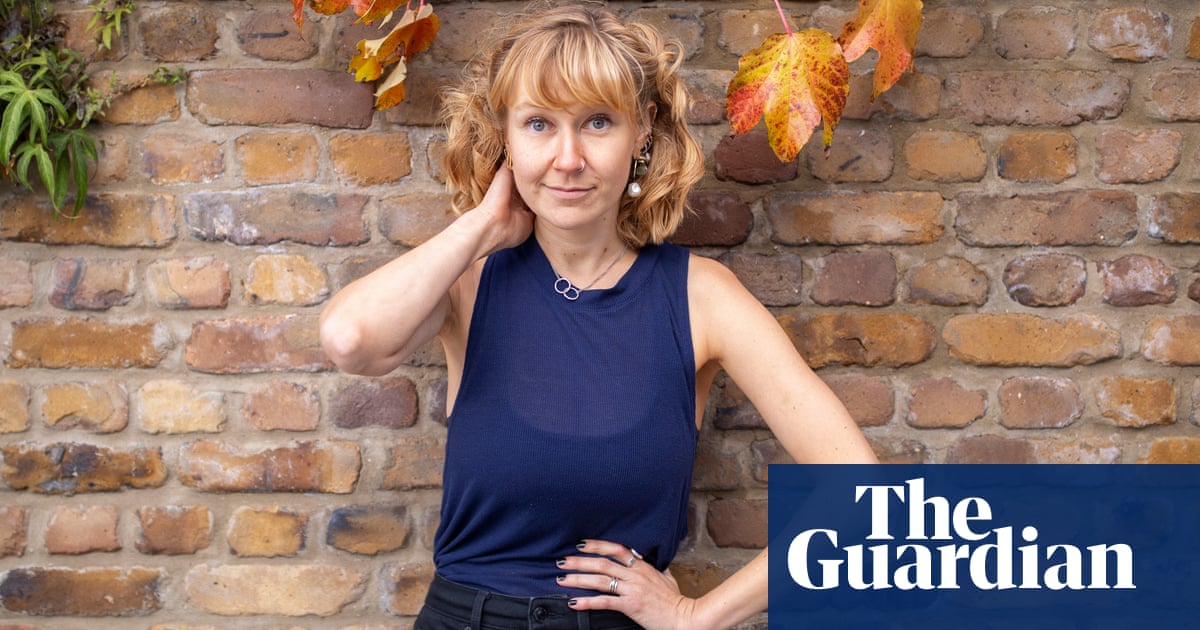
oyin Ojih Odutola was born in Ife, Nigeria, in 1985. She moved to the US aged five, first to Berkeley, California, then to Huntsville, Alabama, where her father worked as a professor and her mother as a nurse. Ojih Odutola is renowned for her intricate portraits drawn with ink, pastel and charcoal. Zadie Smith called her “one of the most exciting young artists working today”, and has written an introduction to Ojuh Odutola’s new Barbican show, A Countervailing Theory.
Your new show imagines an ancient civilisation in central Nigeria where women rule over an underclass of black male humanoids. How did this idea come to you?
It came from two separate incidents: one was reading an article about rock formations in central Nigeria, which indicated that some ancient civilisation had arranged them in such a way; the second was from an episode of the BBC podcast A History of the World in 100 Objects on the Ife head. A German archaeologist discovered the [centuries-old brass statue] in 1910 and couldn’t conceive of Nigerians having the mental aptitude to create such anatomically correct and beautiful objects, so he decided that Greeks from Atlantis had made it. I started asking, who has a right to create their own stories? I wanted to create a work of art that, visually, stood apart from occidental picture-making, that felt very “other”.
How did you go about it?
I wanted to flip the script in every aspect. For example, the surface I’m working on is black, as opposed to the neutral white we’re used to marking on. It was really challenging: what you’ll see in the Barbican is the culmination of nearly 14 months’ work.
In the world you’ve created, black women are powerful, but they could also be seen as oppressors.
I’m always interested in how power dynamics play out. People often argue that if you’ve been subjugated your whole life, and you’ve seen how power is abused, you would treat people better, you wouldn’t be an oppressor. I’m always the person who goes: “Would you, though?” That’s what drove the story for me.
You are known for creating elaborate fictional worlds, with the story unfolding across a series of drawings. What attracts you to that way of working?
I think I’ve always wanted to work this way, but when I was studying art in school, I was pushed towards identity art. Because I am a black woman, they were like, the only thing of worth you can offer is yourself. But as I started working professionally, I realised that what I really like is telling stories. It freed me up from being beholden to my own story. My story’s not that interesting. You can find out where I was born on Google. What I’m interested in is the “could” – the possibility of something – not the “should” or the “would”.
When an idea starts to come together in your head, what’s the next step? Do you write it down in words before drawing it?
Absolutely. I need text to give me a framework. The images are working in response to it. I do a lot of research, but I will also be in the studio testing out materials and pushing myself creatively. I’m known for my very layered, intricate mark-making, but I got complacent with a certain style and I wanted to see where else I could go.
You moved to the US when you were five, and lived in Berkeley before moving to Alabama. What were those transitions like?
It wasn’t until we moved to Alabama that I really got a history lesson in America, and what it is to be black, which at that point was not really a preoccupation of mine. So Alabama was one of the best things that ever happened to me, because it made me question everything. Why am I being treated like this? Why am I aberrant in these contexts and not in others? Luckily, I discovered drawing. Through drawing, I could cope with the racism, the sexism, the cultural friction. It helped me disassociate a little bit and understand that this is a systemic problem, a societal imposition.
You grew up in the same town – Huntsville – as the Ghanaian-American novelist Yaa Gyasi. Did you know her as a kid?
Oh yeah, we totally hung out. She’s amazing. We were both weird, creative types. We loved stories. It’s nice when you know someone you share history with: when I talk to her now it’s really refreshing, because she has a lot of the same reference points that I have.
Solange Knowles is an avid collector of your work. How did you meet?
Solange is a dear friend. She was one of the very first people to reach out to me as a fan and be a patron. She has a deep knowledge of design and art history. She models for me as well. I feel bad because I force her to do these poses. We’re hanging out and I say “Oh you look really cool there”, and I’ll take a photo and it ends up being a drawing. She’ll be like: “When did that happen?”
So when you draw someone, it’s not based on a formal sitting?
It’s very misleading when people call me a portraitist. I work from photography and often it’s a composite of multiple people. But I’m very fortunate that I have really badass, beautiful people around me that compel me to draw them.
Were you meant to be coming over to London ahead of your show?
It changed at the last minute [because of coronavirus restrictions]. We installed the show via Skype. It looks amazing, but it’s really strange not to be in the space experiencing the work as it goes up.
A Countervailing Theory is at the Barbican Centre’s Curve gallery, London EC2, from 11 Aug to 24 Jan 2021












